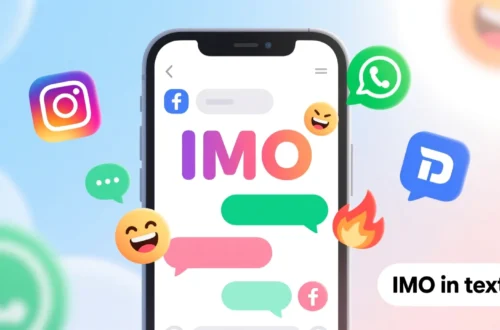Picture a bustling street in Rio de Janeiro, where a cheerful “olá” sparks a smile between strangers. That simple word, “hello,” opens doors to connection, carrying warmth across cultures.
Whether it’s a soft “bonjour” in a Parisian café or a vibrant “salaam” in a Cairo marketplace, the term for “hello” reflects humanity’s shared desire to reach out, shaped by each culture’s unique spirit.
Let’s embark on a global journey to explore how people say “hello” in different languages and what these greetings reveal about their societies.
Reference Table: “Hello” in Different Languages
| Language | Word/Phrase | Cultural/Linguistic Insight |
|---|---|---|
| French | Bonjour | Means “good day,” used formally and casually with politeness. |
| Spanish | Hola | A versatile, friendly greeting common across Spain and Latin America. |
| Italian | Ciao | Informal and warm, used for both “hello” and “goodbye.” |
| German | Hallo | A straightforward, universal greeting in casual settings. |
| Mandarin | Nǐ hǎo (你好) | Means “you good,” a polite greeting emphasizing respect. |
| Hindi | Namaste | Means “I bow to you,” a respectful gesture with spiritual roots. |
| Japanese | Konnichiwa (こんにちは) | Means “good afternoon,” used as a general daytime greeting. |
| Korean | Annyeong (안녕) | A casual “hello,” reflecting Korea’s friendly social vibe. |
| Arabic | Salaam (سلام) | Means “peace,” a warm greeting used in 20+ countries. |
| Swahili | Jambo | A friendly, inclusive greeting used across East Africa. |
| Zulu | Sawubona | Means “I see you,” emphasizing personal connection in South Africa. |
| Yoruba | Bawo ni | Means “how are you,” a warm greeting in Nigeria. |
| Maori | Kia ora | Means “be well,” a heartfelt greeting in New Zealand. |
| Hawaiian | Aloha | Means “love” or “affection,” embodying the island’s spirit. |
| Cherokee | Osiyo | A traditional greeting, symbolizing community and respect. |
European Languages: Greetings with Warmth and Tradition
European languages offer diverse ways to say “hello,” each infused with cultural nuance. For instance, in French, “bonjour” (good day) is a polite greeting used in both formal and casual settings, reflecting France’s emphasis on courtesy. Meanwhile, Spanish speakers say “hola,” a versatile and friendly term heard from Madrid to Mexico City, often paired with a warm smile. Additionally, Italian uses “ciao,” an informal greeting for both “hello” and “goodbye,” showcasing Italy’s laid-back charm. In German, “hallo” is a direct, universal greeting, aligning with Germany’s straightforward communication style. Thus, these terms balance tradition and warmth, from the poetic French to the pragmatic German, uniting Europe’s diverse voices in greeting.
Asian Languages: Harmony in Hellos
Asia’s linguistic diversity shapes unique greetings, often tied to respect and harmony. For example, in Mandarin, “nǐ hǎo” (you good) is a polite greeting, reflecting China’s focus on respect in social interactions. In Hindi, “namaste” (I bow to you) is both a word and a gesture, rooted in India’s spiritual traditions, often used with folded hands. Similarly, Japanese uses “konnichiwa” (good afternoon) as a general daytime greeting, heard in Tokyo’s bustling streets, emphasizing politeness. In Korean, “annyeong” is a casual, friendly “hello,” aligning with South Korea’s warm social culture. Finally, Arabic’s “salaam” (peace), used across over 20 countries like Egypt and Saudi Arabia, carries a wish for tranquility, rooted in the region’s poetic heritage. These greetings highlight Asia’s range, from respectful to heartfelt expressions.
African Languages: Community in Connection
African languages tie “hello” to community and personal connection. For instance, Swahili, spoken in over 20 countries like Kenya and Tanzania, uses “jambo,” a friendly and inclusive greeting heard in markets and villages. In Zulu, “sawubona” (I see you) in South Africa emphasizes acknowledging the other person’s presence, fostering deep connection. Similarly, Yoruba’s “bawo ni” (how are you) in Nigeria is a warm, engaging greeting, inviting conversation. These terms, used across diverse African settings, reflect a communal spirit, often shared with smiles and gestures in social gatherings.
Indigenous & Island Languages: Greetings from the Heart
Indigenous and island languages express “hello” with simplicity and warmth. For example, Maori in New Zealand uses “kia ora” (be well), a heartfelt greeting reflecting the culture’s focus on well-being. In Hawaiian, “aloha” means “love” or “affection,” embodying the islands’ spirit of warmth and hospitality. Similarly, Cherokee’s “osiyo” is a traditional greeting in Native American communities, symbolizing respect and community. In Samoan, “talofa” is a warm welcome, often used in Pacific gatherings to foster unity. Across these cultures, from New Zealand to the Cherokee Nation, “hello” emphasizes connection and shared values, often tied to rituals.
Cultural Insights: The Evolution of Greetings
Greetings like “hello” have evolved with cultural exchanges. For instance, the English “hello” emerged in the 19th century with the rise of telephones, spreading globally through technology. In Arabic, “salaam” traces back to ancient Semitic roots, symbolizing peace across centuries. Moreover, in African languages like Swahili, “jambo” reflects trade-era interactions, emphasizing inclusivity. In Asia, terms like “namaste” and “nǐ hǎo” are rooted in spiritual and social respect, shaped by ancient philosophies. These greetings carry histories of trade, migration, and technology, uniting people through shared expressions of connection.
Proverbs and Sayings: Wisdom of Greetings
- French: “Un bonjour ouvre le cœur.” (A hello opens the heart.) – Highlights greetings as a gateway to connection.
- Hindi: “Namaste se dil milte hain.” (Namaste brings hearts together.) – Emphasizes spiritual unity.
- Swahili: “Jambo moja, furaha nyingi.” (One hello, many joys.) – Ties greetings to shared happiness.
- Japanese: “Konnichiwa wa tsunagari no hajimari.” (Hello is the start of connection.) – Reflects greetings as relationship builders.
- Yoruba: “Bawo ni, ayọ wa.” (Hello brings joy.) – Links greetings to positivity.
FAQs
Why do some words for “hello” sound similar?
Globalization spread terms like “hello” (e.g., German’s “hallo”), while shared linguistic roots (e.g., Arabic’s “salaam” in Swahili) create similarities.
What’s the oldest term for “hello”?
Arabic’s “salaam,” rooted in ancient Semitic languages (circa 2000 BCE), is among the earliest, symbolizing peace.
How do cultures shape the term’s use?
Collectivist cultures (e.g., African, Indigenous) use “hello” to build community, while individualistic cultures (e.g., European) focus on personal acknowledgment.
Conclusion
From “hola” in Spain to “jambo” in Tanzania, the word for “hello” weaves a global thread of connection and warmth. Each term, whether the respectful “namaste” in Hindi or the heartfelt “kia ora” in Maori, reflects cultural values while celebrating our shared desire to connect. Consequently, these greetings remind us that a simple “hello” can bridge divides, uniting all people in a universal gesture of openness. How do you say “hello” in your language, and what does it mean to you? Share your stories below—we’d love to hear your voice!





